#doydindang
Photo

Making stuff means getting your hands dirty. Ceramic artist glazing plates at #doydindangpottery, Chiang Rai, Thailand. * * * * #ceramics #pottery #artist #ceramicartist #yellow #crafts #craftsperson #apprenticeship #happy #laughing #creativework #chiangrai #chiangraithailand #thailand #environmentalportrait #doydindang #useyourhands #kiln #work #workshop #studio (at Doi Din Dang)
#laughing#artist#yellow#doydindang#chiangraithailand#craftsperson#environmentalportrait#crafts#ceramics#useyourhands#chiangrai#thailand#creativework#happy#studio#apprenticeship#doydindangpottery#work#workshop#kiln#ceramicartist#pottery
0 notes
Photo
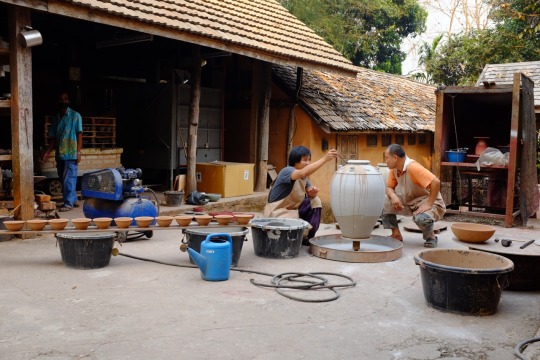

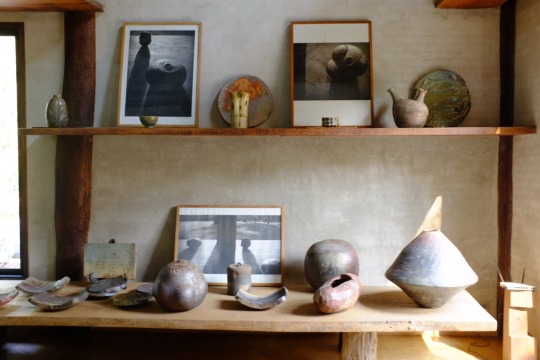
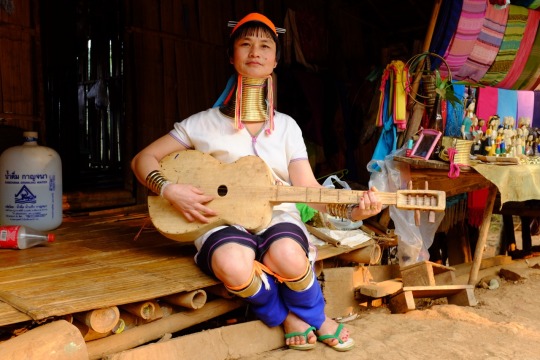
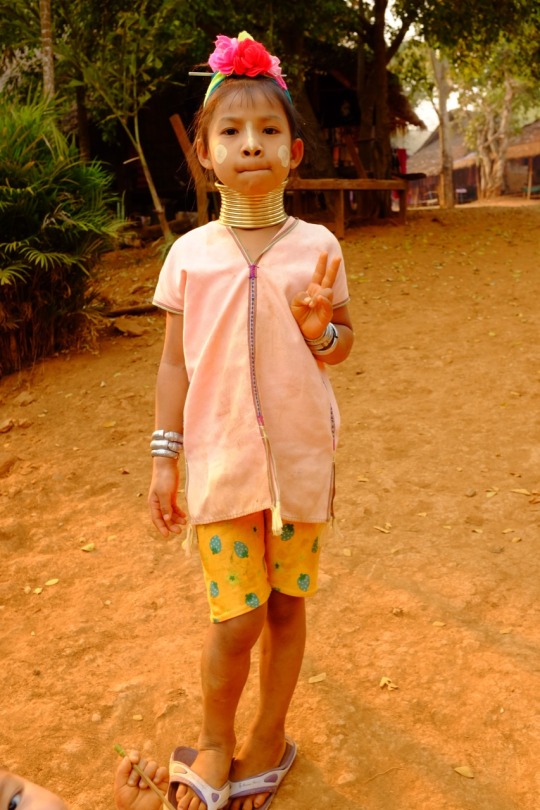
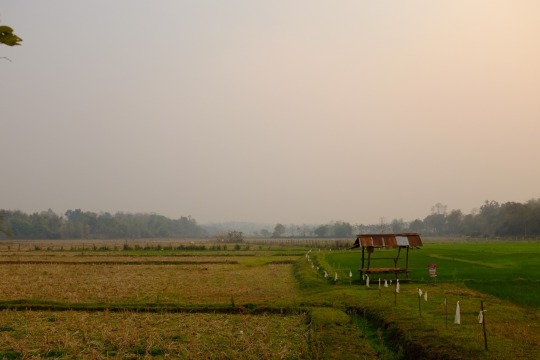

What started as a pleasant afternoon at a famed Chiang Rai ceramics studio turned into a shocking confrontation with a grim reality of modern Thai tourism. The plan was to rent a motorbike and head north 15km or so to get to the open studio of Doy Din Dang Pottery. It's owned by a Thai man who studied in Japan under a local master. He now runs the studio situated in the hills where all materials, including clay are gathered on the property. The name alone sold me. Upon arriving I found I was the only visitor so I strolled aimlessly around the property and into the buildings displaying their work. I found a couple pieces I loved and bought them not knowing how I might get them back to Chiang Rai much less back to America. I put the small one in my backpack and the large one between my legs on the step through motorbike I'd rented. I almost felt like a real Thai then. I just needed someone else riding on back. Leaving the property, I decided to head out the dirt road I was on just a bit further. I'd seen signs for "Hill Tribe Community" a bit further on. Odd, I thought, that it was so close to Chiang Rai. In 5 minutes I was parking the bike and walking to the entrance. There was a tour bus but other than that it seemed rather empty. I paid my entrance fee and followed the map to the first tribal "village". What awaited was a depressing collection of five or so stilted wood-paneled homes dotted haphazardly across a red-clay hill side. Dressed in what appeared to be traditional garb, a few of the older women seemed to be going about their daily routine. Some of the younger ones, also in traditional clothes, tried to entice me to the souvenir stands selling the same wares I'd seen a hundred other places already. Suddenly I felt ashamed of my visit. I continued through the next few "villages" representing other tribes from nearby regions hardly bothering to look. It felt like I was in a human zoo. The last section was where the Padaung lived. The women famously wear copper wire around their necks, appearing to slowly stretch them over their lifetimes. Later, reading, I learned they're not actually extending their vertibrae but pressing their collarbones, shoulders and ribcages down. Pleasant thought but apparently there's no real harm done to the body and it's possible to remove the coils and rehab the neck muscles to support the head again. Walking into the village I saw a woman playing what looked like a guitar. I listened to her play and when she stopped, I asked if I could give it a try. She happily obliged and I sat next to her to pick out a few notes. It had four strings and frets placed seemingly haphazardly across the fretboard. Some were set at microtone intervals and only under a single string, not across the neck. The rest made some kind of musical sense to me and I had a little country melody after a few attempts. After establishing that I was no Padaung guitar hero I handed it back and she started strumming while I sat next to her. She sang a slow melancholic tune and I wondered if it bemoaned the loss of her native home or a loved one or decried the sad situation in which she lived. When she finished I gave her a small donation and slowly made my way out of the village and back toward my motorbike. On my way I passed some of the younger girls who giggled and gossiped. Everyone looked relatively happy and healthy but despite the musical connection, I still felt rather unsettled about the whole situation. Leaving the way I'd come in, I hopped on my little 125 with the pottery I'd left at the front desk and started back for Chiang Rai. That night I did a bit of online research about the Thai hill tribe communities. I learned that the Padaung, a subgroup of the Karen people, come from the hills bordering Myanmar and Thailand and have been displaced because of war in the region. The Karens, including some Padaung, have been fighting against the Burmese government for years and consequently the Padaung have all be been targeted. Fearing for their lives many escaped to Thailand for refuge. Sadly though, the Thai government has only offered land to the displaced people and granted them no rights at all. That means no access to education, medical care or any other basic rights that come with citizenship. Instead the Thai government has put them on display in villages for tourists to gawk. If they're lucky they'll sell a souvenir or get a small donation. The entrance fee to the park probably helps too but other than that, they're virtually slaves caught in a very bad situation. It's unsettling to see such blatant exploitation first hand. I feel for the people stuck there and regret that my money went to further subjugate them. But if my money didn't go to them and people stopped visiting, would the Thai government let them become beggars and completely obliterate their culture? There are organizations that are helping to better the lives of the Thai hill tribes through education and healthcare. Hopefully one day they won't be an attraction at a human zoo and instead be able to have the same opportunities and ambitions as the people with whom they share a country.
1 note
·
View note